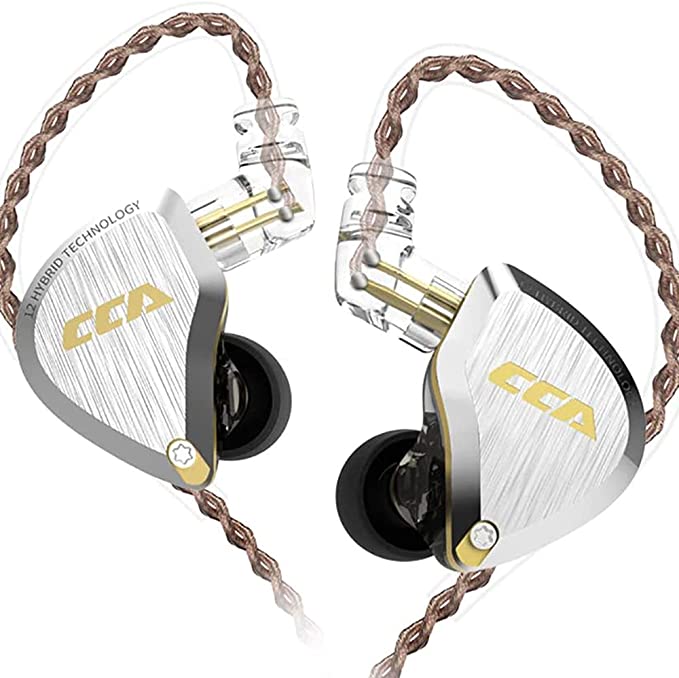The Athlete's Soundscape: How Headphone Engineering Boosts Workout Performance
Update on Oct. 14, 2025, 6:02 p.m.
For many athletes, headphones are as essential as their running shoes or weightlifting gloves. They provide motivation through music and focus through podcasts. But we often overlook a crucial fact: a well-designed pair of sports headphones is not just an audio accessory; it is a piece of high-performance athletic gear, engineered to interact directly with the human body in motion.
Let’s move beyond playlists and examine the physical and psychological interface between an athlete and their audio equipment. Using a modern design like the Matast C16 as a case study, we can deconstruct how specific engineering choices in fit, durability, and isolation are made to enhance, not hinder, physical performance.

The Anchor: The Biomechanics of a Secure Fit
During high-impact activities like running or plyometrics, the human body becomes a system of complex forces. The head experiences significant acceleration and deceleration. For an earbud, this environment is a constant battle against inertia and gravity. An insecure earbud is more than an annoyance; it’s a cognitive distraction, pulling the athlete’s focus from form and effort to fiddling with their gear.
This is where ergonomic designs like flexible ear hooks come into play. From a biomechanical perspective, the ear hook serves two functions:
1. Force Distribution: It extends the contact area beyond the ear canal, distributing the device’s weight and the inertial forces across the larger, more stable structure of the outer ear (the pinna). This drastically reduces the pressure points inside the sensitive ear canal.
2. Counter-Leverage: The hook acts as a lever, countering the downward and outward forces that try to dislodge the earbud during movement.
A secure fit also has a subtle proprioceptive benefit. Proprioception is our body’s sense of its position in space. A stable, securely fitted device becomes an unconscious part of our body schema, requiring zero mental bandwidth. An unstable one is a constant, low-level distraction that can subtly compromise focus and motor control.
The Shield: Surviving the Corrosive Environment of Sweat
An athlete’s body is a hostile environment for electronics. Sweat is not just water; it’s a saline solution containing chlorides, urea, and other minerals that are highly corrosive to the metals found in electronic circuits. A single drop of sweat reaching a charging contact or a circuit board can initiate a process of galvanic corrosion, rapidly degrading the device.
An IP Code (Ingress Protection) rating quantifies a device’s resistance to solids and liquids. An IP7 rating, for instance, signifies that the device can be submerged in 1 meter of water for 30 minutes without damage. For an athlete, this is not about swimming; it is about guaranteeing protection against the most intense, sweat-drenched workout.
This level of protection is often achieved not through bulky seals, but through advanced materials science. A nano-coating applied to the internal components creates a hydrophobic surface at a microscopic level. This causes moisture to bead up and roll off, rather than adhering to and penetrating the circuitry. It’s an invisible shield, ensuring the electronics survive the daily chemical assault of a rigorous fitness regimen.
The Zone: How Sound Isolation Fosters a State of Flow
The final, and perhaps most important, function of athletic headphones is psychological. The ability to control one’s auditory environment is a powerful tool for achieving a state of “flow,” or being “in the zone”—a mental state of complete absorption in an activity.
A busy gym is an environment of chaotic auditory input: clanging weights, other people’s music, conversations. This sensory noise requires cognitive resources to filter out. A well-fitted earbud provides a degree of passive noise cancellation (PNC) simply by physically blocking the ear canal. This reduces the cognitive load required to ignore distractions.
By creating a personal and controlled soundscape, the headphones allow the athlete to synchronize their movement to a rhythm or focus on a coach’s voice in an audio program. Studies in sports physiology have shown that music at a specific tempo can improve endurance and power output. By providing a stable, distraction-free audio environment, the hardware becomes a direct enabler of these psychological and physiological benefits.
Ultimately, the design of a great sports earbud is a study in human-centered engineering. It’s an understanding that for an athlete, technology must become an extension of the body, resilient to its rigors and supportive of its goals. It must be an anchor, a shield, and a gateway to the zone.


















